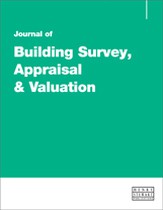The role of agreed surveyor and undue inconvenience to the adjoining owner
Abstract
For small and less complex projects, the appointment of an agreed surveyor could help both building owners and adjoining owners to deal with notifiable works much more speedily and affordably. However, for more complex and contentious projects where there is potential for the process to go wrong, such an appointment may prove to be challenging to say the least. In particular, questions may be asked that may test the resolve of the agreed surveyor. Such issues may include undue inconvenience, a test to the impartiality of the agreed surveyor, in particular in relation to his or her statutory duty to uphold the Act. So, what criteria may be used to define undue inconvenience and what would be the consequences of the proposed notifiable works creating undue inconvenience for the adjoining owner?
The full article is available to subscribers to the journal.
Author's Biography
Peyman Ghasemi is the principal of P G Construction Consultants Ltd (PGCCL) and a Construction Consultant with over 28 years' experience in design, survey and construction management of a wide variety of projects (including residential, commercial and industrial projects). Peyman has worked for and represented a wide variety of clients, ranging from domestic owners to large national companies. His academic qualifications include a master of science in construction engineering and a diploma in construction management. Peyman has been dealing with neighbourly issues for over 16 years and has dealt with a range of complex projects involving party wall disputes, boundary disputes, licensing issues, etc. Peyman is also a certified commercial mediator as well as an expert determinator, dealing amongst others, with construction and property disputes.
Citation
Ghasemi, Peyman (2015, July 1). The role of agreed surveyor and undue inconvenience to the adjoining owner. In the Journal of Building Survey, Appraisal & Valuation, Volume 4, Issue 1. https://doi.org/10.69554/VVFZ5972.Publications LLP
